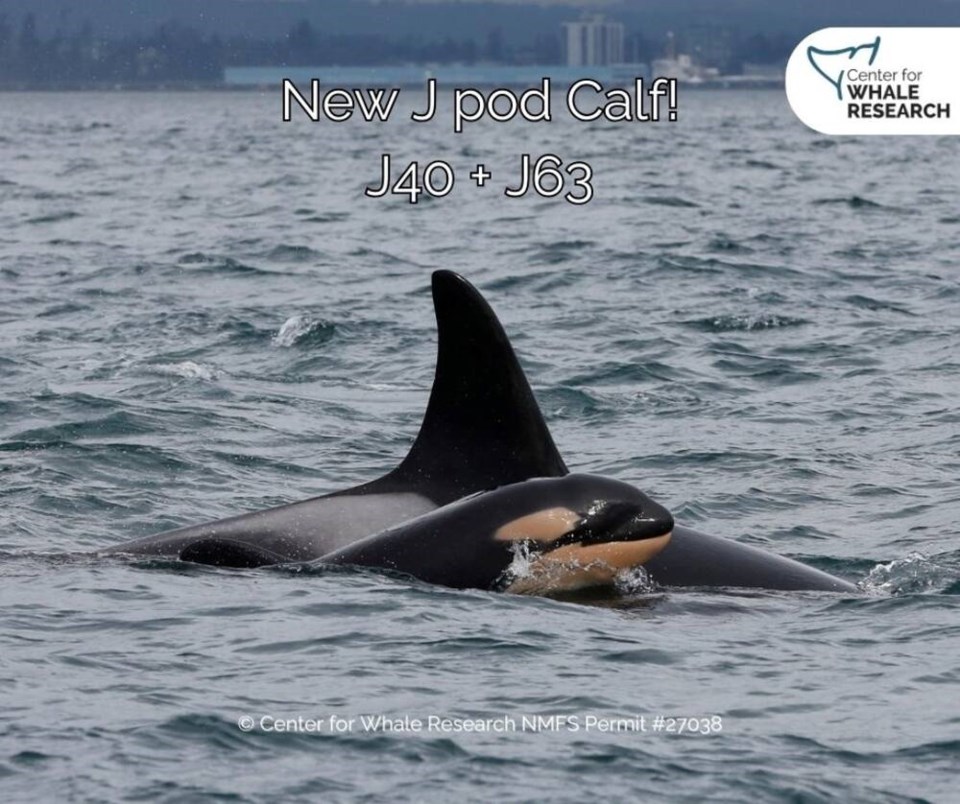Scientists are cautiously celebrating the birth of another calf to the southern resident killer whales.
It would be J40’s first known calf and the fourth born into the southern resident population in the past 12 months, which researchers say is “a sign of hope for this endangered community.”
The sex of the calf has not yet been determined.
While there were no immediate concerns about the calf, now designated J63, the first year of life is “often a challenging time for young whales, particularly those born to first-time mothers,” the Center for Whale Research said in a social media post.
News of the calf follows the recent birth of J62, first spotted in December. An update in February indicated that J62, confirmed as a female, appeared to be healthy, and was seen swimming and socializing with J Pod near the San Juan Islands east of Victoria.
Late last year, another newborn, J61, died after a short time. Its mother, J35, carried and pushed her dead calf for nearly two weeks in an apparent show of mourning. A calf born to L-Pod, L-128, went missing and was presumed dead in October.
Two new surviving calves in four months gives a critical boost to the southern residents, who number just 74 animals in J-, K- and L-pods.
“We remain cautiously optimistic about J63’s survival and will conduct follow-up observations of the calf’s behavior and physical condition in the coming days and months, as opportunities allow,” the centre said.
“Each new calf is vitally important to this critically endangered population — every birth counts — and we’re hopeful that this young whale will continue to thrive.”
The calf’s mother, J40, also known as Suttles and part of the J14 matriline, was born in 2004.
The Orca Conservancy said Suttles is the great-granddaughter to J2 Granny and is often said to look much like her, with a similarly shaped dorsal fin and saddle patch.
The conservancy said J40 did not previously have any calves of her own, but has developed the reputation of being a babysitter. She is often observed travelling with J31 Tsuchi and calf J56 Tofino, which both belong to a separate matriline, the J11s.
The name Suttles was chosen in a traditional potlatch ceremony held by the Samish Nation, in honour of the late Wayne Suttles, an anthropologist who devoted his career to preserving Coast Salish cultures.



